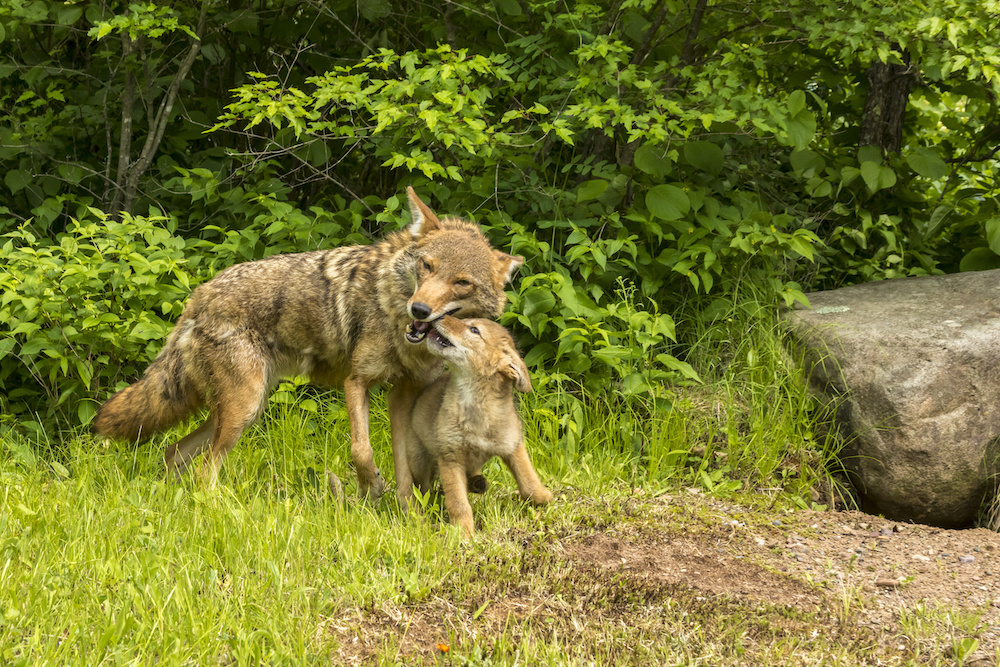Coyotes in the Raleigh Area: What You Need to Know

Have you heard the howls?
Reports of sightings and recorded audio of coyotes making their presence known in Raleigh and the surrounding area have increasingly made their way onto social media and neighborhood forums like Nextdoor in recent months.
We asked Tara Harrison, an associate professor in the NC State College of Veterinary Medicine’s exotic animal service, to offer insight on what’s going on and what pet owners should know about the risk of a coyote encounter. Spoiler alert: The sightings and sounds are not new.
Are coyote sightings in our area typical?
Coyotes are native only to North America and have a wide range. They were originally native to the grasslands of the Great Plains of the United States, but have spread to North Carolina. This spread into North Carolina started in the 1980s.
Where do coyotes in our area likely gather and why do we seem to be experiencing more sightings right now? Are they becoming more common in residential areas?
Coyotes have been expanding their range, and with the decrease of habitat areas without people it is more likely for them to be seen in areas with people with encroachment into wooded areas and expansion of urban areas.
Why are they howling?
Coyotes howl to locate pack members, distract threats away from their den or establish their territory. In the late summer, pups practice howling. The tone of their howl may make it seem that they are closer than they actually are. Coyote pups disperse to find new territory in November or December and increased howling may be from other animals that are saying, “This is my territory and not yours.”
How likely is someone to encounter one and what should you do if you spot one? Do they usually come close to homes or other public spaces?
When living in close proximity to humans, coyotes tend to be nocturnal but may be active as well in the early morning and sunset. In areas with little to no human activity, they may be active during the day.
As it gets closer to winter, coyotes may become more active in the day looking for food. Coyotes, like other animals, are more likely to engage in humans or human areas if they are fed. Do not feed them.
Overall, they prefer to stay away from people and not interact with them. To avoid conflict make sure there is no outside food and that any garbage or trash is contained. Also, fence your yard. Yes, they could jump fences, but an additional deterrent helps. Coyotes breed in January through March and give birth in May. They may become more aggressive during breeding season and when they have pups.
Are they a threat to pets, farm animals or horses? Can they transmit disease or cause major injuries? What can people do to protect their animals?
Coyotes are 20-45 pounds, so they would not be a threat to larger animals. They could be a threat to young farm animals during breeding season. This is when appropriate fencing is more important.
They also could be a threat to small pets in breeding season or when they give birth, especially if pets are in unfenced yards, in yards with very low fences and if they are left unsupervised. Overall, coyotes are omnivores, and a study from Fort Bragg found that persimmons and berries were the most common food in the coyote scat (41%) followed by mammals (29%) and insects (21%). Another study found that small rodents were the primary food item (33%), followed by rabbits (30%), deer (25%), other mammals (8%) and vegetation (3%).
In general, they are opportunistic eaters. They may also scavenge on roadkill and eat outdoor pet food or garbage.
~Jordan Bartel/NC State Veterinary Medicine
For more information on coyotes, go here.
- Categories:


